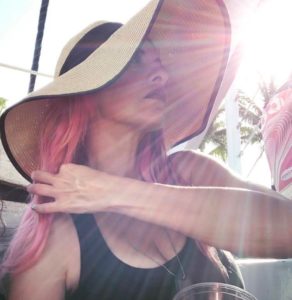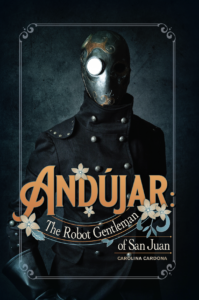World-building: Combining History and Speculative Fiction
I love opposites.
I love them in food–hello, dark chocolate with sea salt! I love them in relationships, as anyone who’s met my husband can vouch. And, most of all, I love them in literature.
Lately, I’ve been gravitating toward stories that are both speculative and historical in nature. On one hand, I get to visit a weird or wonderous world that could never actually exist. On the other, I get to experience the past– real-life places or events—that ground everything, giving them an extra kick of relevance.
But I can also tell you that creating these babies is hard. I’ve written three short stories lately combining both elements, and they’ve taken twice as much time to finish as my usual short stories. (And despite that, one of them will probably never see the light of day.)
My solution? Call up one of my dear friends and fellow writers for advice, then type it all up into a blog post so you, reader, can benefit, too. Enter Carolina Cardona, author of Andujar: The Robot Gentleman of San Juan, a steampunk novel set in her native Puerto Rico during the Spanish-American War. The following is a condensed, edited version of our conversation.
So, Carolina, what came first for you when you began writing your novel? The characters? The conflict? The world?
The world absolutely came first. I was in Puerto Rico in 2007, and I found the Gallery Inn. That house told me the story. I knew the colors, what it smelled like, everything.
And how did you choose to write something set during the Spanish-American War?
In Puerto Rico, every student learns about when “the Americans invaded” – July 25, 1898. Prior to that, there had been a naval attack on El Morro, where the Americans bombed the bay and then retreated. That was [the event] I wanted to use, because I wouldn’t change history.
So how much research did you do?
It took about a year. It’s a lot of research, but it’s fun. It’s ‘What sort of shoes did they wear in Havana in 1678?’ I read a lot of history books, first-person accounts in Spanish. The ocean battle [that occurs in the novel’s climax], that took the most time. I interviewed a professor who knew military history. There are museums dedicated to the Spanish American War.
How did you keep it all organized?
I write in google docs. I put in my notes, so it’s all there.
Did you deviate from history anywhere significant? How do you decide when to change things?
The better-known insurrections against Spain [in Puerto Rico] were good 20 years earlier. I moved it all together for tension.
Did you intend for it to be a steampunk novel from the beginning?
I meant it to be a romance, originally. When you think of Puerto Rico and the Caribbean, you think of Don Juan. I wanted to do the opposite … a kind of Victorian consumptive. But then this typical love story period novel starts to speak to me as something else.
And that ‘something else’ is a robot! I loved the unexpected combination of steampunk on a Caribbean island. How did that come about?
Most steampunk I’ve read or seen takes place in London, other European cities or the American West. I’d read great romance novels, great Victorian novels, but I hadn’t seen this. I just wrote what I wanted to read.
And what about the more fantastic and supernatural elements in the story, where did those come from?
Both of my great-grandparents did seances, so this is really part of my heritage. I was also interested in elements that typically don’t go together … Espiritismo and the way it interacts with science.
When you are working with so many elements—history, romance, science fiction, the supernatural, and an action-packed ending — how do you keep things clear vs. confusing?
The way my brain works, I can only believe in one thing at a time. If it’s too much, I just can’t process it. [Despite the action ending,] this novel is still in intimate spaces. It is a love story about a robot. This could be Jane Austen … but it’s just this uncanny thing.


